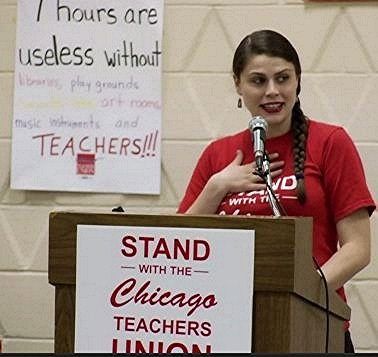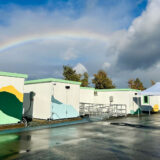Education
Chicago Teachers: How We Won Our Strike

In September, 25,000 Members of the Chicago Teachers Union (CTU) stood strong on picket lines and flooded the streets of downtown Chicago in rallies, refusing to return to work until the school district and Mayor Rahm Emanuel came closer to their idea of fair in contract negotiations.
They prevailed. The teachers defeated merit pay, forced the district to hire 600 teachers and took care of laid-off workers. In doing so, they showed that teachers’ unions will not lie down, even as privatization encroaches. The teachers and unions also experienced an outpouring of support from activists and the general public.
How did CTU pull it off? What lessons are there to learn from the victory in Chicago?
A recent forum asked how CTU transformed its union in order to draw lessons for the future from the successful campaign. The forum was documented on video (posted above). Featured speakers are:
- Jesse Sharkey, CTU Vice President
- Sarah Chambers, rank-and-file teacher
- Steven Ashby, Professor of Labor Studies at the University of Illinois
- Flynn Hampton, Chicago Teachers Solidarity Campaign organizer
In the forum, Ms. Hampton goes over how the initial stages of the campaign involved attending budget meetings and holding a rally at a downtown Hyatt to determine the whereabouts of tax dollars that could fill the Chicago School District’s budget shortfall.
Jesse Sharkey, the Vice President of the Chicago Teachers Union says that the strike, “Put the voices of parents teachers and community members back on the map in fighting for quality schools.”
He goes on to describe the feeling of empowerment in the midst of the strike:
We picketed with 20,000 a day, marched with 25,000 … it wasn’t just about winning a contract, it was about building the forces on our side … everywhere you looked there was a sea of supporters.
Sharkey states that the union’s next battle will be to fight over proposed school closings that will be concentrated in the city’s poorest neighborhoods, calling it a “deeply racist program.”
Sarah Chambers speaks about CTU’s 100 percent attendance rate during the strike as the culmination of a long effort to build solidarity among the rank and file — solidarity that was built during the lead up to the 98 percent strike authorization vote.
Professor Ashby contrasts CTU’s ability to show up in the tens of thousands everyday, all day for rallies and pickets, with the “lawn chair” strikes of the 1980s. He states that pickets used to last two hours, then strikers would eat breakfast and go home.
Not in Chicago. Anything short of the full commitment that stemmed from coalition building would have meant failure. The union built support and worked toward a solution for the better part of a year, and turnout for rallies was much greater than expected as a result.
The forum is essential viewing for organizers planning or involved in campaigns, actions or strikes, and anyone curious as to how CTU won an improbable — and definitive — victory.
Matthew McDermott is a Unionosity editorial assistant and outreach coordinator. His post is republished with permission.

-

 Latest NewsDecember 10, 2025
Latest NewsDecember 10, 2025Capital & Main, L.A. Times Win Sidney Award for Reporting on Child Farmworkers
-

 StrandedDecember 9, 2025
StrandedDecember 9, 2025Giving Up on the Dream: Asylum Seekers Try Other Options in Mexico
-

 Locked OutDecember 16, 2025
Locked OutDecember 16, 2025This Big L.A. Landlord Turned Away People Seeking Section 8 Housing
-

 Column - California UncoveredDecember 12, 2025
Column - California UncoveredDecember 12, 2025They Power the U.S. Economy, But Will Struggle to Afford Health Care
-

 The SlickDecember 19, 2025
The SlickDecember 19, 2025‘The Poor Are in a Very Bad State’: Climate Change Accelerates California’s Cost-of-Living Crisis
-

 Locked OutDecember 23, 2025
Locked OutDecember 23, 2025Section 8 Housing Assistance in Jeopardy From Proposed Cuts and Restrictions
-

 Column - State of InequalityDecember 11, 2025
Column - State of InequalityDecember 11, 2025A Little Place Called Home?
-

 Locked OutDecember 17, 2025
Locked OutDecember 17, 2025Credit History Remains an Obstacle for Section 8 Tenants, Despite Anti-Discrimination Law

